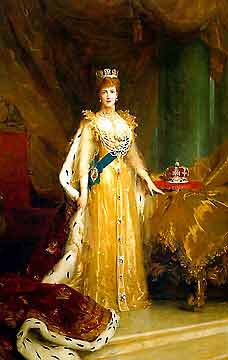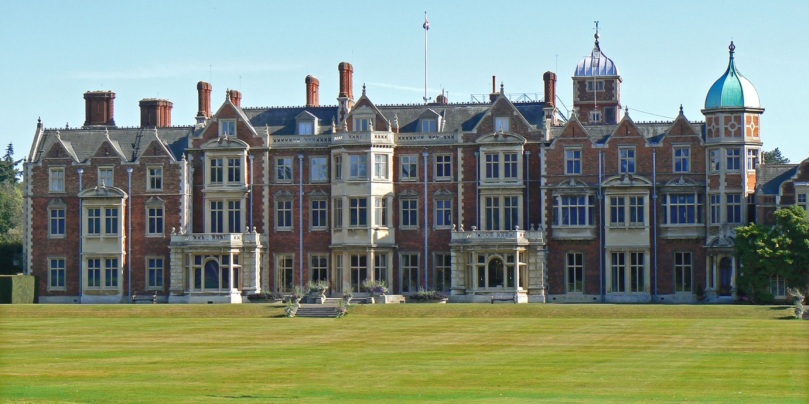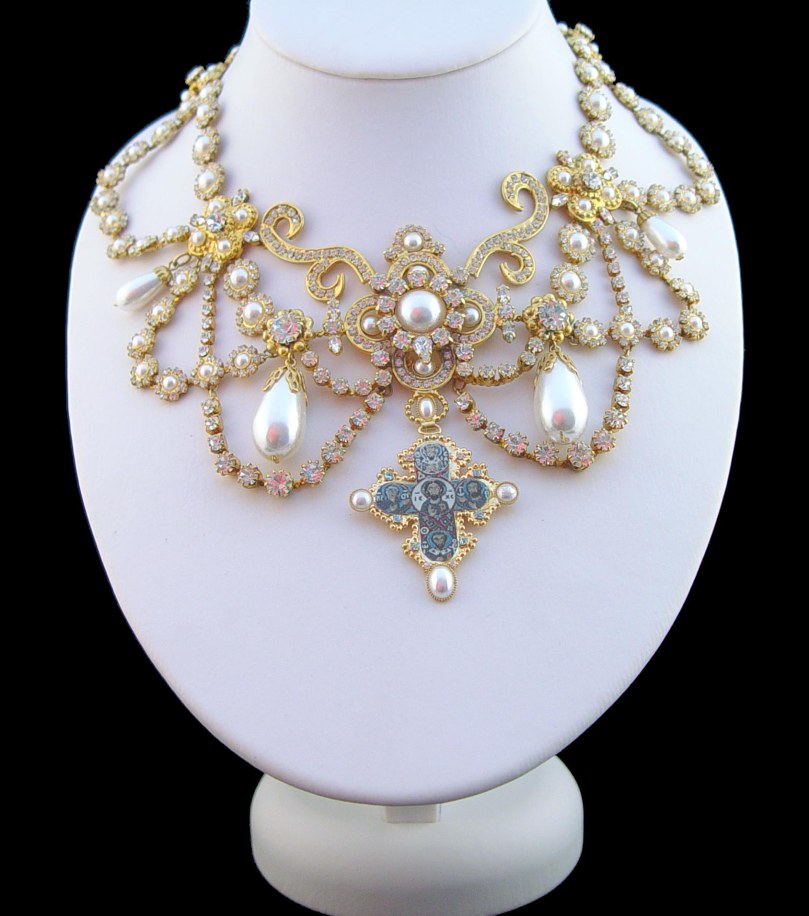
Albert Edward, Prince of Wales and the son and heir of Queen Victoria was a notorious rake. His parents recognized this when he was very young and arranged a marriage in the hopes of keeping him from getting into further trouble. The wife chosen for him was Alexandra of Denmark. My friend Jayne Smith is a big fan of Alexandra and wrote this article as a guest post for The Freelance History Writer. Here’s Jayne.
Alexandra was born at the Gule or Yellow Palace in Copenhagen, Denmark on December 1, 1844 and was given the names Alexandra Caroline Mary Charlotte Louisa Julia. She was the eldest daughter and the second of the six children of Prince Christian of Schleswig-Holstein-Sonderburg-Glücksburg (1818–1906) and his wife Louise, Princess of Hesse-Cassel (1817–1898) who eventually become King Christian IX and Queen Louise of Denmark. They lived modestly for royals as the prince was an officer of the Danish Guards but this changed once he became heir to the throne. Alexandra’s childhood seemed to be happy and she was particularly close to her second brother William, who became the King of Greece and her sister Dagmar (Minny), who became Russian Empress Maria Feodorovna.
Alexandra’s education was not extensive but she was taught French, German and religion, and she developed a liking for music and became rather proficient at it. She was also quite shy which was maybe due to her being slightly deaf after having a fever in childhood. Edward, Prince of Wales was in need of a wife and his mother Queen Victoria and his sister Crown Princess Victoria started looking for a suitable candidate. Alexandra’s name came up and she was vetted by them. Originally it was felt she was not suitable as Queen Victoria’s family were German and they were the enemies of Denmark but eventually it was decided she was the one, so a marriage was arranged. It took place on March 10, 1863 at St. George’s Chapel, Windsor which was not the usual choice for the marriage of the heir to the throne. But the decision was up to Queen Victoria who was still in mourning for her husband Prince Albert who had died in 1861.
Alexandra fit in very well within the royal family and developed her own style of dress and taste. She and Edward made an attractive couple and they received a lot of attention as many people flocked to them. She loved jewels and began to acquire them and gradually over the years she amassed a handsome collection. She had her own favourites, especially pearls which she wore as collars to hide a scar she had on her neck. This can be seen in the picture at the top of the page. Court standards didn’t bother her so much; she gladly wore faux jewels when it suited her, and didn’t fuss much with traditions for coronation dressing as she believed she knew best.
The royal couple spent a lot of time renovating Sandringham House, which Edward had acquired a few months before his marriage. Sandringham became a much loved home to them although it drastically reduced their finances. It is still one of our current Queen’s favourite homes.

It was a hard life in one way for Alexandra as Edward had many affairs but she supported him in public. The couple had six children with five surviving into adulthood and she was a loving mother to them, although sometimes a bit possessive of them at times. She was jolly and much fun but was a little extravagant which did not go down well with Queen Victoria. She hunted and drove tandem carriages.
Edward and Alexandra represented the Queen in Ireland and then took a six-month tour of Europe through Egypt, Austria and Greece where she visited the Crimean battle fields and then toured the harem of the Khedive Ismail l in Turkey where she became the first woman to sit down to dinner with the Sultan Abdulaziz. Then in 1875-76 much to Alexandra’s dismay, the Prince of Wales set out on an eight-month trip to India without her. He came back with lots of fine jewellery given to him as presents, which mollified her a little. The majority of it was altered and is now part of the crown jewels handed down throughout the generations although some stayed as private jewels.
Below in the first picture is the Dagmar Necklace which was made for her when she got married and was given to her by King Frederik VII of Denmark.
The second picture is a Russian style tiara commissioned by 365 peeresses on the occasion of Alexandra and Edward’s silver wedding anniversary in 1888. It is known as the Kokoshnik tiara.


During Queen Victoria’s declining years, Alexandra stood in for her many times, opening bazaars, attending concerts and functions, without much grumbling although the deafness had gotten progressively worse. When Edward became King in 1901, she carried on the role she had carved out for herself. She looked after her grandchildren whenever she could. But one thing that upset her was she had no access to the king’s private papers as the courtiers thought she meddled where she shouldn’t and her anti-German feelings were well known.
She was gracious, kind and gave many presents. She formed Queen Alexandra’s Imperial Military Nursing Service in 1902, and she presided over the first council meeting of the British Red Cross Society in 1905. A favourite charity was the London Hospital, which she referred to as ‘my hospital’. In my opinion she must be given much credit for her part in developing one of the most important roles of the modern monarchy. The patronage and encouragement of charitable institutions and societies which she started has continued to be carried out since then by the following generations of monarchy.
The king and queen lived separate lives most of the time due to their different tastes. She liked the quietness of Sandringham and he liked the court life in London. This arrangement was by mutual agreement and was not an estrangement. She even accepted Edwards’s mistress Alice Keppel in his life. Edward died in 1910 and she settled into the role of queen mother which was the title she used for herself. She didn’t relinquish the role of queen very easily to her daughter-in-law, Queen Mary, wife of George V, her second son, and she took a long time relinquishing the crown jewels to Mary as was required.
She carried on with her charities and during the First World War, continuing her hospital visiting although she was becoming very frail and blind. She was frankly anti-German and was very upset over what happened to her nephew Nicholas the last tsar of Russia. She had frequent visits from her sister Dagmar (Empress Maria of Russia who had been rescued from the revolution in Russia) and was looked after by her unmarried daughter Victoria. She died of a heart attack at Sandringham House on November 20, 1925 and was buried in Windsor.
Further reading: Entry on Alexandra in the “Oxford Dictionary of National Biography”, “The Royal Jewels” by Suzy Menkes
Great information. Much appreciated.
LikeLike
Very interesting , thank you very much!
LikeLike
Good stuff, Jane.
LikeLiked by 1 person
Or rather, Jayne! No edit button on this thing.
LikeLiked by 1 person
An enjoyable post.
LikeLike
Thank you Iva!
LikeLike
Reblogged this on she.thinks.aloud and commented:
A history article from The Freelance History Writer
LikeLiked by 1 person
Re-blogged on my new blog 🙂
LikeLike
Thank you Carolyn!
LikeLike
Thank you Susan for featuring this !
LikeLike